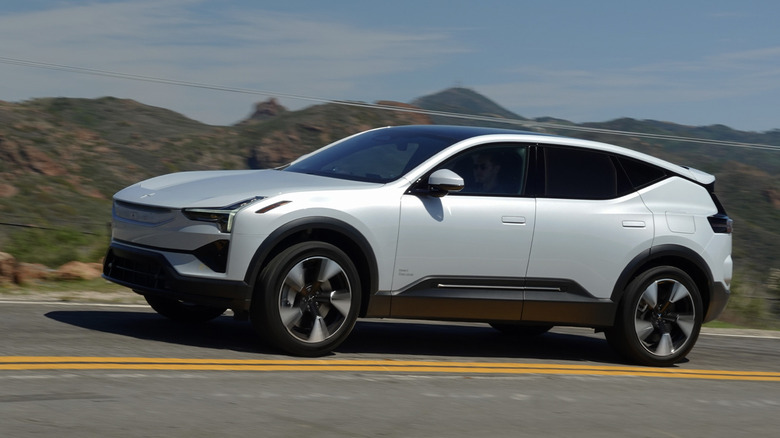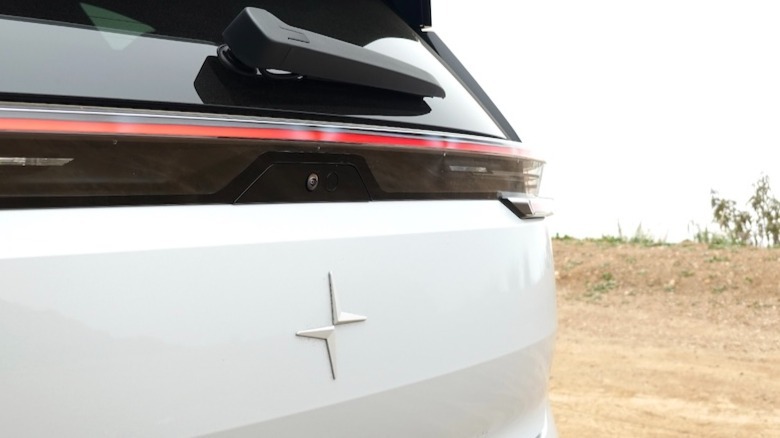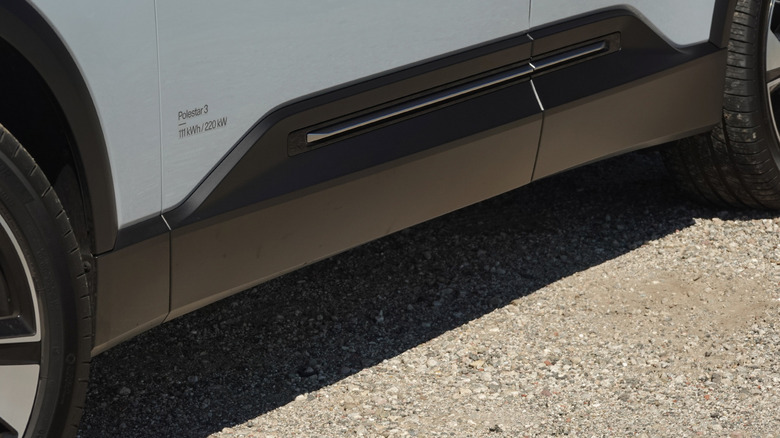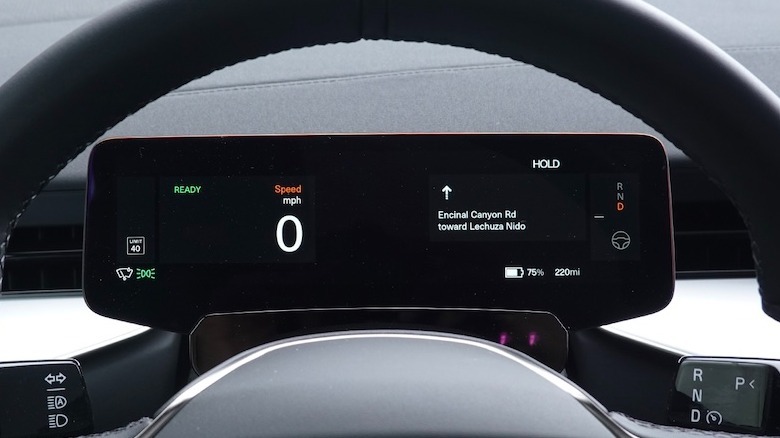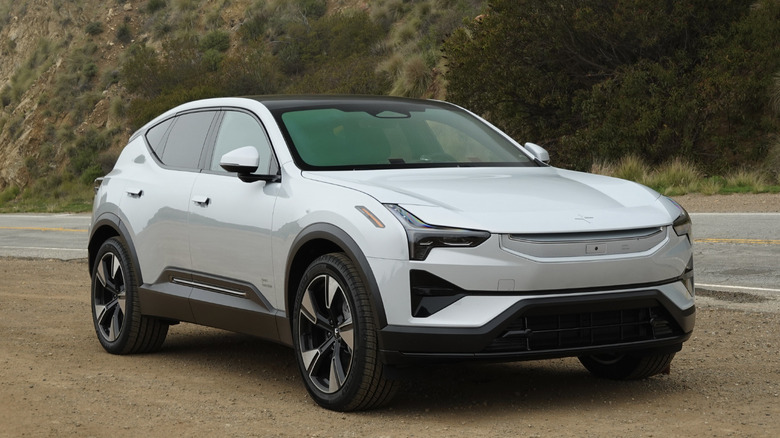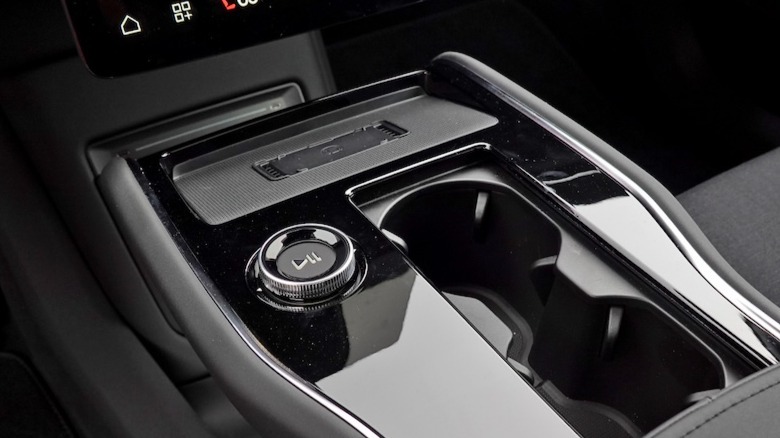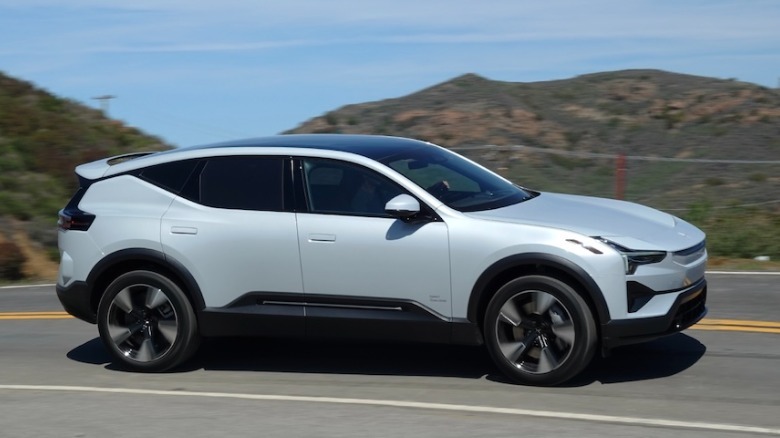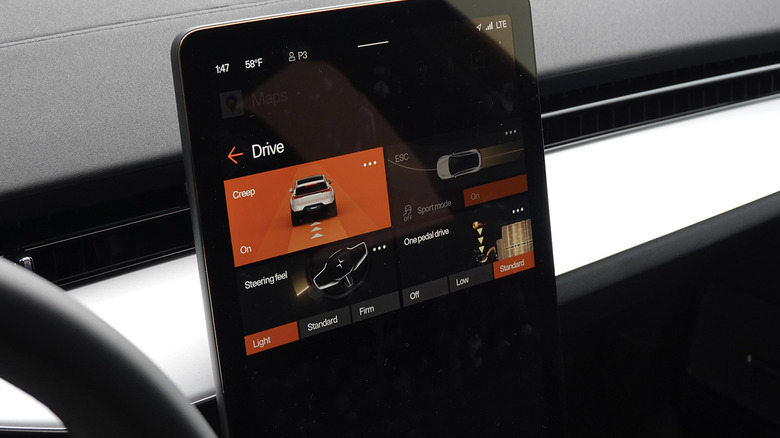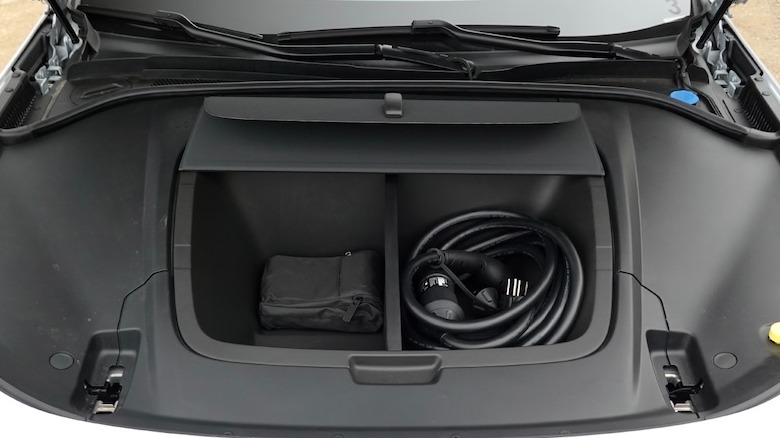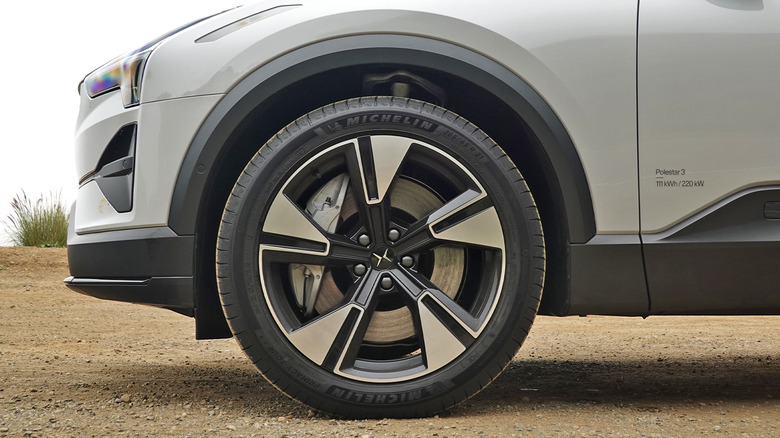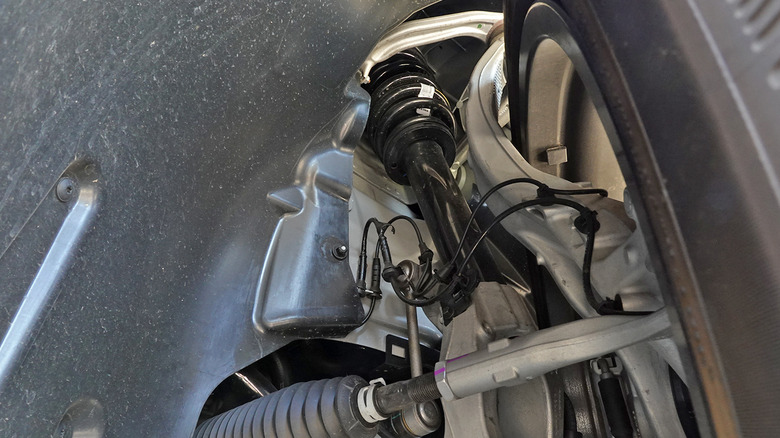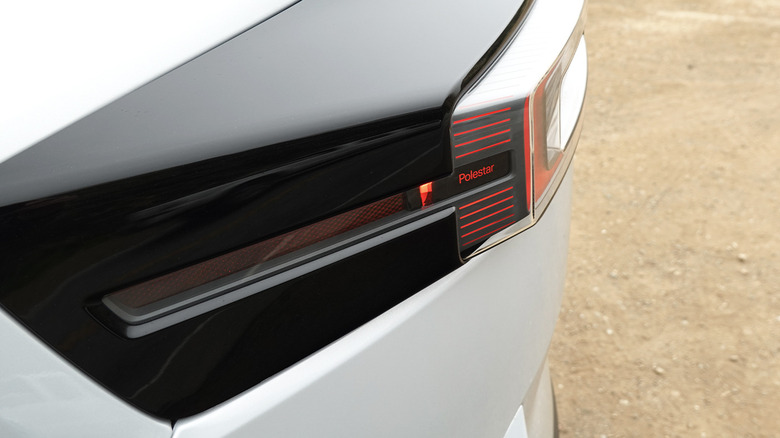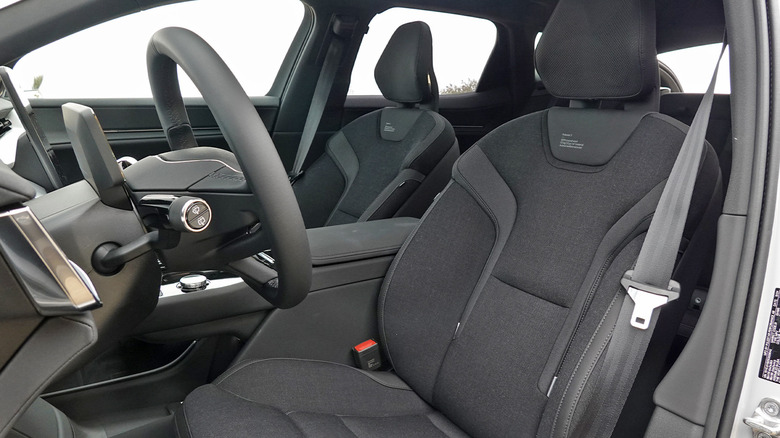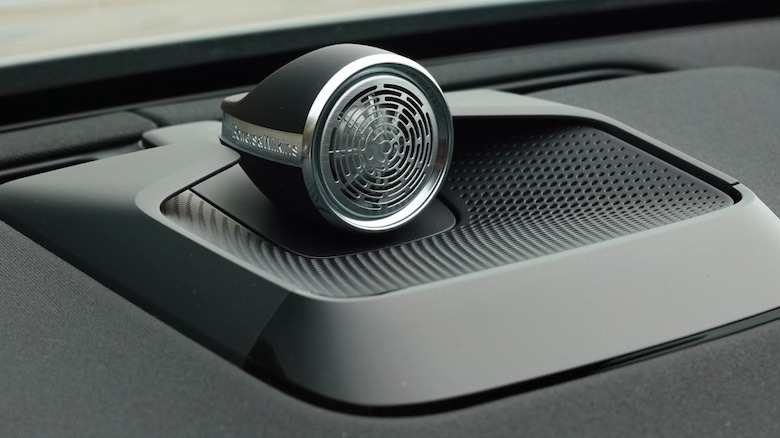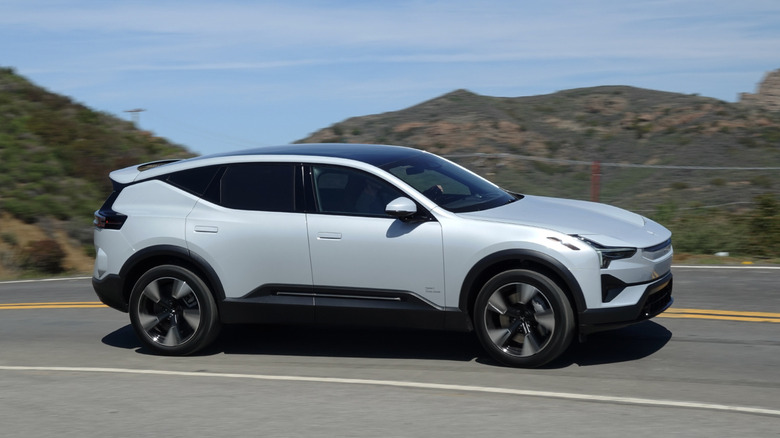The Cheapest Polestar 3 Trades Power For Range, But That Wasn't What Surprised Us
Last year, Polestar debuted the new 3 and 4 SUVs on a media drive program in Spain. I immediately fell for the 3 on the smooth tarmac outside Madrid, where the responsive steering and clever rear-motor torque vectoring made this larger SUV even more playful than the more sporting 4 (and don't ask about that rear window, or lack thereof).
Now, the 3's newest variant arrives with the longest range rating, in the most popular body style for American EV buyers, and–most critically at this time–from $67,500 (plus destination) priced well below the Tesla Model X. But in the meantime, I ventured up to Sweden for a full day of ice drifting, where the order of my favorite Polestars flip-flopped. The 4 immediately stood out as my favorite for slinging around the frozen lake, then the 2, and the 3 last.
In those admittedly extreme conditions, purposefully drifting as much as possible, the 3 almost became too tail-happy, or more accurately, I felt far too much obvious lag as the onboard software calculated parameters of slip and slide without creating confident predictability of the power delivery.
3 follows 2
The 3 joins Polestar's lineup alongside the 2 with a single-motor entry-level variant. The 2 took a stranger path to get here, though, because the original single-motor 2 started with a front-wheel-drive layout. That decision hewed more closely to Polestar's Volvo roots, while improving efficiency and range—but also paired badly with listless steering often overwhelmed by instantaneously available torque, as well as some throttle liftoff oversteer and strange sailing effects on long highway sweepers.
Then, after something of an outcry, the 2 switched to a single rear motor. At the very least, the RWD 2 sparked a bit more fun, though on the launch program, I came the closest yet to crashing a press car (knocking on wood and everything crossed). Call a foolish attempt at turning traction control off and trying to drift a matter of journalistic thoroughness or not, but I struggled to shake the memory as I climbed into the RWD 3 for a day on the highways and familiar canyons of the Malibu hills.
Still very much the same SUV
Polestar's prescribed drive route brought up further ruminations, since much of Malibu suffered catastrophic fire damage this past January and most of my favorite roads—plus how to reach them—remain closed months later. Talk about a stark reminder of sustainability messaging, which Polestar always emphasizes heavily. The single-motor 3 does so with different wool, faux leather, and real leather with source tracing, plus attempts to use new monomaterials, and more.
I generally enjoy the minimalist Scandinavian style, even if the declarations on seatbacks can seem somewhat postural (pun fully intended). The 3, in particular, delivers on efficient EV powertrain packaging with plenty of space in the two rows and the trunk. Maybe the RWD variant might even get a bigger frunk, I figured, given the lack of a front motor.
Stats and specs of the RWD Polestar 3
Polestar tech integration, as usual, relies to heavily on menus and touchscreens organized into tiles for adjusting drive modes and infotainment and climate controls. Configuring hot keys never fits into the schedule of a brief media drive, though, and all this applies largely to the dual-motor anyhow. More importantly, my job on the day involved sussing out how the 3 Long range Single motor (with proper capitalization based on Polestar's press materials) actually drives.
Predictably, specs on paper provide plenty of context. All Polestar 3 variants use the same 111-kilowatt-hour battery, which in this case allows for an EPA-estimated range of up to 350 miles because the single motor puts down only 299 horsepower and 361 lb-ft of torque (down from the dual-motor's 489 hp and 620 lb-ft combined). The same 250-kilowatt max charge rate allows for 10-80% charging in 30 minutes.
Less weight, but much less power
Dropping the front motor saves about 100 kilos (220 lbs), so the single motor tips the scales at 5,298 pounds versus the dual-motor's 5,686-pound curb weight. Most of that diet sheds weight from the front axle, though I peeked under the hood and spied a very familiar (read: small) front trunk. Bummer.
The power gap versus the dual-motor 3 never fades into the background, despite nearly 7% in total poundage saved. Off the line, getting up to speed, and highway passing simply takes longer. Even the experience of instantaneous torque punchiness dull down, though turning the ESC to Sport mode helped a bit.
Blending regen with a rear motor and front brakes
In fairness, the RWD 3 can still keep up with any typical internal-combustion SUV in almost any scenario. But I do wonder whether a bit of the lag, at lower speeds especially, occurs to the lack of the torque-vectoring rear motor—it's the same motor, just without the disconnecting clutch pack that on the AWD 3 allows for freewheeling when the front motor takes over for efficiency's sake.
Regen also takes a dive—once again, pun fully intended. Braking the front axle always works better, regardless of whether electric motors or good-old-fashioned rotors and calipers do the job. Therefore, the 3 will automatically start by using strictly regen to slow down, before feeding in the front friction brakes when the driver asks for more stopping power. (And the ESC system uses only friction brakes, no regen.)
Steel springs replace air suspension
More surprisingly, the RWD 3 also receives an entirely different suspension package. In place of the air bags on the dual-motor, which allow for more sophisticated shock damping and adjustable ride height, the new 3 uses passive dampers and steel springs. Cost considerations to help undercut rivals explains the downgrade best, though I wonder if the RWD 3 might have managed even a few more miles of range with the ability to hunker down at highway speeds.
Instead, despite Polestar claiming the dual-motor 3's airbags were tuned to mimic the behavior of a traditional passive suspension setup, the single motor rides entirely different.
Not bad, just different. A bit more reactive and responsive, with less cushiony float but not necessarily more grip, the RWD 3 still toes the fine line between sporty aspirations and luxurious comfort—really, in a manner that perfectly suits the lineup's aspirations.
Heating up in the canyons
On all-wheel-drive Polestars, I tend to prefer the lightest steering setting to emphasize feedback and reduce torque steer. Additional weight over the nose and power delivery can occasionally make me nauseous, plus the finer sensitivity better fits with the Scandinavian rally heritage.
Fiddling through the menu screens, however, I enjoyed the single motor 3 most with the steering set to mid-level assist. Whipping around on Mulholland and down onto Decker, the lighter nose pitching and diving, standard Michelin Primacy Tour tires on staggered 21-inch wheels started to heat up.
Range-friendly rubber struggling to haul a 5,200-pound SUV around tight corners at serious pace will start to heat up and protest quickly, but unlike on the RWD 2, I never came close to losing a slide. Instead, perhaps because of the 1,000 additional pounds, the RWD 3 will happily break all four wheels loose and keep feeding in power to the rear wheels for a beat longer.
Electric stability control comes into play
Just don't try a hard burnout with the wheel cranked, because one of two things will happen: either the software will simply shut everything down, or the rears will catch for a microsecond and then the software will simply shut everything down. Instead, flying into a slide with momentum after setting the tire edge seems to allow the traction and stability control some time to predict and accept slip angle, after which the ECU allows some countersteering without throttling back electrons.
The steel springs and passive dampers do create additional bucking on the roughest roads, but luckily Polestar's focus on NVH prevents more time hum from entering the cabin. And even if the RWD 3 lacks some getup-and-go, or the gut-punching acceleration of more performative EV crossovers, I definitely enjoyed the ride quality and more pliable nature more versus the 2.
Revisiting the dual-motor Polestar 3
Then Polestar gave me a chance to bounce back into a dual-motor 3 for a quick lap, and I remembered exactly how much the power gap and all-wheel drive and more luxurious trappings level up. The RWD lacks a few customizable drive settings, the additional power and the Performance Pack, and the available Öhlins dampers (and most importantly, ventilated seats).
Oh well, pricing and range undoubtedly matter more than a touch more refinement for almost any EV buyer these days. A RWD 3 can still climb up in price by tacking on the Pilot and Plus Packs, as my tester reached a $76,700 MSRP. Still, especially as Tesla support craters, the new Polestar 3 Long range Single motor looks more and more attractive by the day.
